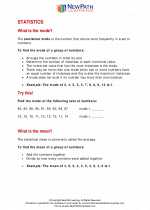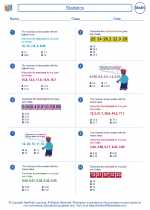Probability Rules Study Guide
Introduction to Probability
Probability is the measure of the likelihood that an event will occur. In mathematics, probability is used to quantify the uncertainty of outcomes. Understanding probability rules is essential for making informed decisions in various fields such as statistics, economics, and science.
Basic Probability Rules
There are several basic rules that govern probability calculations:
- Addition Rule: The probability of the union of two events A and B is given by P(A or B) = P(A) + P(B) - P(A and B).
- Multiplication Rule: The probability of the intersection of two independent events A and B is given by P(A and B) = P(A) * P(B).
- Complement Rule: The probability of the complement of an event A is given by P(A') = 1 - P(A).
- Conditional Probability Rule: The probability of event A given that event B has occurred is given by P(A|B) = P(A and B) / P(B).
Practice Problems
Let's practice using the basic probability rules with the following problems:
Problem 1:
A fair six-sided die is rolled. What is the probability of rolling a 3 or a 5?
Solution: Using the Addition Rule, P(3 or 5) = P(3) + P(5) - P(3 and 5) = 1/6 + 1/6 - 0 = 1/3.
Problem 2:
A bag contains 3 red balls and 5 blue balls. If a ball is drawn at random, what is the probability of getting a red ball?
Solution: The probability of getting a red ball is P(red) = 3/(3+5) = 3/8.
Problem 3:
In a deck of 52 playing cards, what is the probability of drawing a king and then drawing a queen (without replacement)?
Solution: Using the Multiplication Rule for independent events, P(king and queen) = P(king) * P(queen) = (4/52) * (4/51).
Conclusion
Understanding and applying probability rules is crucial for solving a wide range of real-world problems. By mastering these rules, you can make informed decisions and analyze uncertain outcomes effectively.
.◂Math Worksheets and Study Guides Fifth Grade. Statistics

 Worksheet/Answer key
Worksheet/Answer key
 Worksheet/Answer key
Worksheet/Answer key
 Worksheet/Answer key
Worksheet/Answer key
